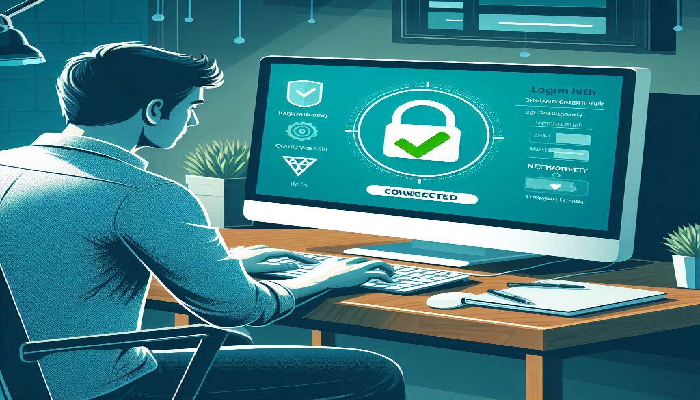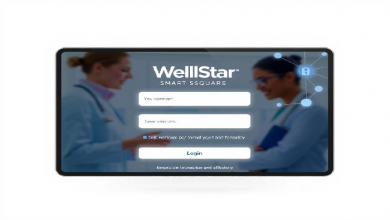Network Health Login

Network Health Login Find out how to improve your account security and its availability in the world wide Web reading this large article about network health. Beginning with the basics of passwords and ending with the themes of a two-factor authentication, this article shares useful information and tips for the readers to protect their accounts online and become more secure users of the Internet.
From a computer expert to an ordinary internet user, this breakdown will arm you with knowledge and resources to navigate and transform network health.
Significance of the Network Health Login
Online accounts today can contain an incredible amount of our personal information, which is why it is crucial to have a secure method of accessing them. From getting details about health insurance, Cash less hospitalisation facilities to availing customer support for health care services, a strong Network Health Login plays our backs by providing secure access to online tools along with quality health care services.
Weak Network Health Login Practices are associated with the following risks;
Poor network health login practices directly put users into different security risks in a way that their personal and financial information can be accessed by unauthorized persons. Without appropriate safeguards, its participants become exposed to risks of identity theft, fraudulent insurance claims, or unauthorized use of health insurance. Further, stolen or guessed login information could result in patients’ PHR data being accessed by unauthorized individuals, threatening privacy and security of the material.
Why it is Important to Pay Attention to Network Health Login
There are various benefits of prioritizing network health login that include improved security, free mind and ease of using online tools and acquiring quality health care services without the risk of someone else logging in and using them without your consent. Using the network health login, people can also benefit from the services such as the annual preventive health check, accessing the services related to health insurance using different apps, and engaging directly with the customer support personnel for any support they need.
A Quick Reference Guide to Enhancing Your Network Health Login
Writing Your Passwords: Tips to Get It Right
Among one of the elementary measures to improve the isogenicity of the network login is the use of memorable passwords for profiles. A good password has at least 8 characters that contain upper case and lower case letters, alphanumeric as well as special characters. When setting security questions, do not use basic information like birthdays, names of immediate family members, or generic words. However, it’s recommended to use non intuitive and intricate access codes that are hard to predict by unauthorized users.
Implementing Two-Factor Authentication
Two-factor authentication enhances security on a particular account by involving the user to type two ways of identification before gaining access. This usually involves keying in a password and then the user will be challenged to prove who they are in a second form such as through a token on their mobile phone or an email. Employment of two-factor authentication greatly minimizes the association of the account with unauthorized usage no matter the breach of the login details.
Regularly Updating Login Credentials
Users must change passwords and other security questions when signing into the network health login, from time to time. Rotating passwords and checking the security settings of accounts are the main ways to reduce the possibility of someone else gaining access to your personal accounts in the future. Furthermore, combined with letters and numbers, people should avoid reusing passwords across their accounts for risk mitigation if one service’s security is breached.
Conclusion and Next Steps
All in all, network health login should come first to drivers of online account protection and ease, particularly in the health insurance/health care firm category. By considering the factors which make an account more secure from hacking, enhancing the security of the health login practices and feeling comfortable with the virtual environment, such loose conditions can be avoided and people can protect their accounts and health issues free from worries.
Network Health Login Best Practice: This is a brief of the entire process of logging into the Network Health Platform.
- The generation of good passwords and most importantly, fresh and healthy passwords should be fostered.
- Implement two-factor authentication
- Always change the login procedures
- Furthermore, the program should be able to identify the cases of phishing and suspicious authentication.
- Use restrictive networks to log in
- Implement reasonable controls on account access and usage
Information and Assistance Further Reading
For more details and support regarding improving the Parameter Network Health Login and also getting a better healthcare services, the people can also check out few other organizations’ links like Aditya Birla Health Insurance, Axis Bank and Ayushman Bharat Digital Mission etc. These are melville resources whose information, tools, and support can come in handy when people are seeking to increase the safety of their online accounts or get access to healthcare services.
Things You Can Do Right Now to Boost Your Account Security Online
The information and measures highlighted in this valuable reference book would be a vital asset for stakeholders seeking to improve the security of Accounts linked to their internet profile and achieve better Care and Quality in the management of their Health. Therefore, when a person prioritizes the Network Health Login and acceptors, he/or she is able to browse the internet comfortably with the assurance that the accounts are safe.
Related Post,
Optima Health Login A Definitive Instructional
MA Health Connector Login A Full and Detailed Tutorial



